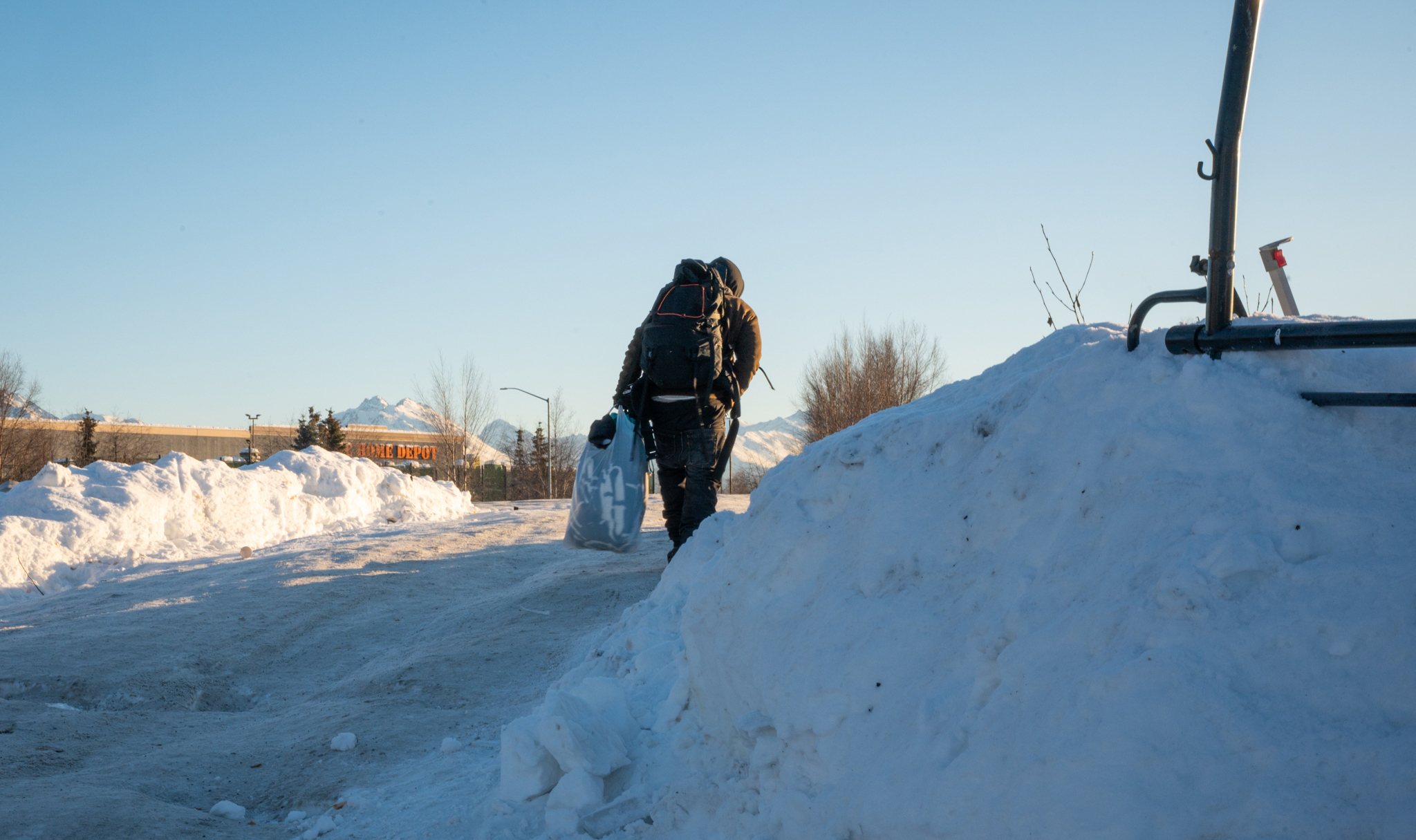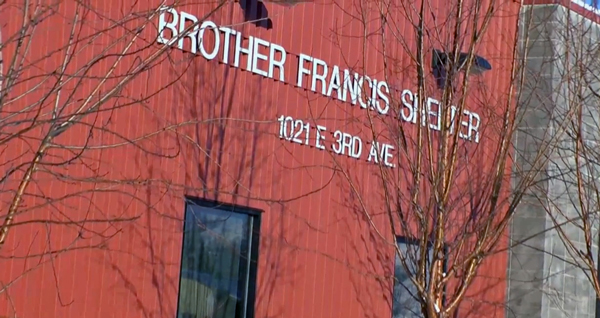
A wave of cold weather across Alaska has brought subzero conditions placing additional demand on Anchorage homeless shelters, as people on the streets report cold-related injuries.
Across the state, a low of 52 degrees below zero was reported Tuesday morning in Chicken. Fairbanks’ forecast Tuesday called for an afternoon high of 28 below. It was warmer in Juneau, which saw temperatures near 30 degrees Tuesday, but the city was bracing for 9 to 16 inches of snow overnight from a winter storm that already dumped 19 inches of snow on the state capital.
In Anchorage, temperatures fell below zero last week, according to National Weather Service meteorologist Brandon Lawson. The city remains under a special weather statement this week for rising river levels due to ice dams formed during the cold weather.
Lawson said Tuesday that a high-pressure system over the Yukon region had brought frigid conditions to the state’s Interior. Low-pressure areas south of the state have created a “pressure gradient,” he said, that sends that cold air toward Anchorage.
“That’s favorable for those colder temperatures, Interior temperatures along the Alcan border and Copper River Basin to filter southward into Southcentral,” he said. “And with that pattern we’re also drier, and typically seeing a lot more clear skies at night, and so that just helps us realize even colder temperatures.”
In Southcentral, Lawson said recent low temperatures have dipped to 20 below in Wasilla, hitting the negative teens in parts of Anchorage. Although the local forecast calls for a brief rise into positive teens over the weekend, forecasters expect it to be short-lived as another storm system passes through Southwest Alaska starting next week.
“You’re going to get kind of an Arctic trough to develop over the state, and on the backside of that trough, we’re gonna get some strong northerly flow,” Lawson said. “And again, that’s kind of one of those conditions where it allows those colder temperatures that have been held that day further north to spill southward.”

The cold spell has sent more people to Anchorage’s homeless shelters, including Catholic Social Services’ Brother Francis Shelter, which has been at capacity since last summer. Spokeswoman Molly Cornish said Tuesday afternoon that the nonprofit has seen steady cases of frostbite and hypothermia, along with injuries from slips and falls on snow and ice, during a winter that has already seen outdoor deaths during November’s major storms.
Dave Rittenberg, CSS’ senior director of adult homeless services, said the group operates a health clinic to address some injuries, as well as the 3rd Avenue Resource & Navigation Center — where people can get out of the cold and take a shower.
“For somebody to come in, get warm, let their antenna down a little bit and be able to focus on next steps is just so important for us getting out of this homelessness crisis — and so especially when temperatures are dropping so far down, and the need to get warm is really a life-and-death type of thing,” Rittenberg said.
Anchorage’s shelter options include the municipality’s warming shelter at the former Solid Waste Services building and converted rooms at the Alex and Aviator Hotels, along with CSS’ Clare House for women with children or expectant mothers and Complex Care for the elderly or people experiencing mental health issues. But Rittenberg said that many of them are at or near capacity, making walk-in services even more important.
Ultimately, Rittenberg said, Anchorage’s homelessness crisis extends beyond a “math problem” of having enough beds for enough people. He urged residents to show a basic sense of humanity toward anyone experiencing homelessness this winter.
“We need to remember that these are individuals that are out there, there are people that have families and stories and lives and making sure that we keep that front and center as a community,” he said. “And remembering that these are our neighbors, and that we need to approach this issue with compassion and empathy.”
Brother Francis maintains an online wish list of donations. Rittenberg said warm outerwear, socks, towels and blankets are in high demand this winter, and cash donations always help.
Chris Klint is a web producer and breaking news reporter at Alaska Public Media. Reach him at cklint@alaskapublic.org. Read more about Chris here.





